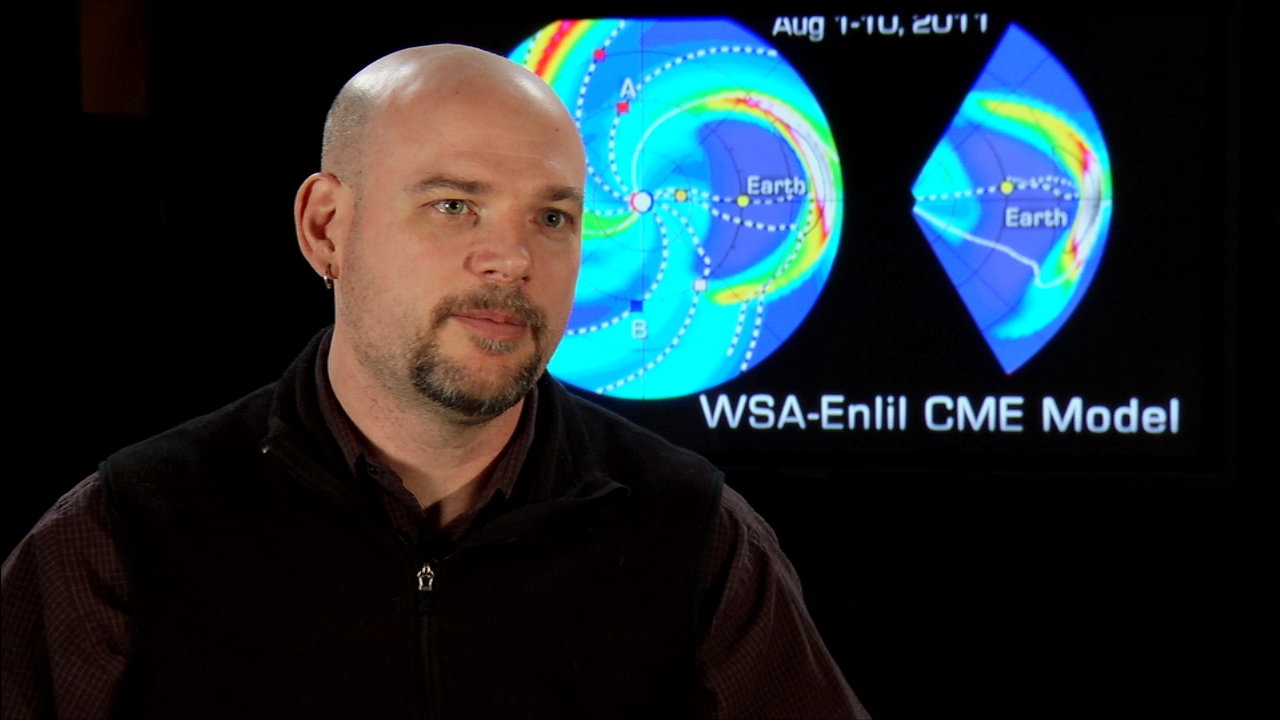Sun Emits a Mid-level Flare
On Nov. 13, 2012, the sun emitted a mid-level solar flare, peaking at 9:04 p.m. EST.
Solar flares are powerful bursts of radiation. Harmful radiation from a flare cannot pass through Earth's atmosphere to physically affect humans on the ground, however — when intense enough — they can disturb the atmosphere in the layer where GPS and communications signals travel. This disrupts the radio signals for as long as the flare is ongoing, anywhere from minutes to hours.
This flare is classified as an M6 flare. M-class flares are the weakest flares that can still cause some space weather effects near Earth. They can cause brief radio blackouts at the poles. This M-class flare caused a radio blackout categorized according to the National Oceanic and Atmospheric Association's Space Weather Scales as R2 — or "moderate" — on a scale of R1 to R5. It has since subsided.
Increased numbers of flares are quite common at the moment, since the sun's normal 11-year activity cycle is ramping up toward solar maximum, which is expected in 2013. Humans have tracked this solar cycle continuously since it was discovered in 1843, and it is normal for there to be many flares a day during the sun's peak activity.
The flare was not associated with a coronal mass ejection (CME), another solar phenomenon that can send solar particles into space and can reach Earth one to three days later. When Earth-directed, CMEs can affect electronic systems in satellites and on Earth.

Visible in the lower left corner, the sun emitted an M6 solar flare on Nov. 13, 2012, which peaked at 9:04 p.m. EST. This image is a blend of two images captured by NASA's Solar Dynamics Observatory (SDO), one showing the sun in the 304

Visible in the lower left corner, the sun emitted an M6 solar flare on Nov. 13, 2012, which peaked at 9:04 p.m. EST. This image is a blend of two images captured by NASA's Solar Dynamics Observatory (SDO), one showing the sun in the 304

By observing the sun in a number of different wavelengths, NASA's telescopes can tease out different aspects of events on the sun. These three images of a solar flare on Nov. 13, 2012, show from left to right : light in the 304

The November 13 flare in 193

The November 13 flare in 193

The November 13 flare in 304

The November 13 flare in 335

By observing the sun in a number of different wavelengths, NASA's telescopes can tease out different aspects of events on the sun. These three wavelengths show the sun during a solar flare on Nov. 13, 2012, from lower left to upper right : light in the 304
For More Information
Credits
Please give credit for this item to:
NASA's Goddard Space Flight Center
-
Animators
- Scott Wiessinger (USRA)
- Tom Bridgman (Global Science and Technology, Inc.)
-
Producer
- Scott Wiessinger (USRA)
-
Writer
- Karen Fox (ADNET Systems, Inc.)
Release date
This page was originally published on Tuesday, November 13, 2012.
This page was last updated on Wednesday, May 3, 2023 at 1:52 PM EDT.
Missions
This page is related to the following missions:Series
This page can be found in the following series:Tapes
The media on this page originally appeared on the following tapes:-
Heliophysics Breaking News 2012 collection
(ID: 2012048)
Thursday, November 1, 2012 at 4:00AM
Produced by - Robert Crippen (NASA)
